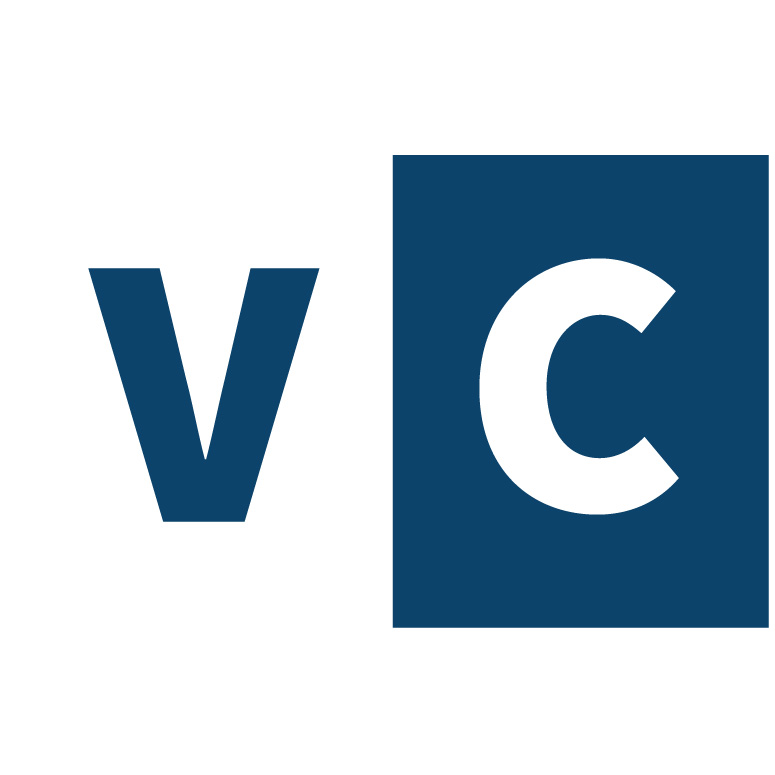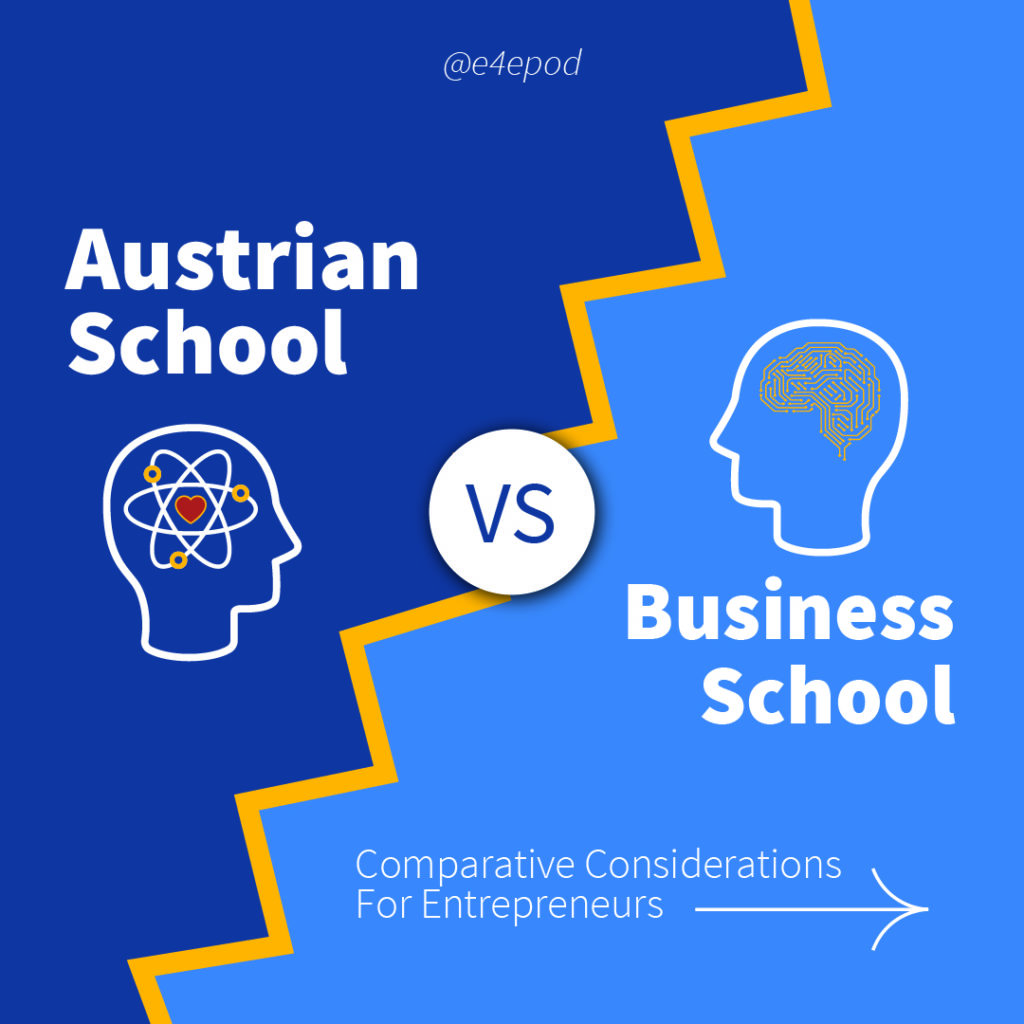Mohammad Keyhani: Implications Of Generativity For Entrepreneurship And Strategy

Implications of Generativity for Entrepreneurship and Strategy
Guest:
Mohammad Keyhani
Haskayne School of Business, University of Calgary
mohammad.keyhani@haskayne.ucalgary.ca
This article is based on episode 104 of the “Economics for Business” podcast by the Mises Institute (www.mises.org/E4BPod) featuring Mohammad Keyhani in conversation with host Hunter Hastings. This text is a slightly edited version of the interview transcript. The original audio can be found here: https://mises.org/library/professor-mohammad-keyhani-generativity-new-digital-pathway-business-growth
Hunter Hastings
Entrepreneurial businesses employ creativity and ingenuity to serve customers in new and better ways in order to grow. They first choose a set of customers and invest in understanding those customers and their dissatisfactions. They then set in motion a development process to design, assemble, and deliver products and services to overcome those dissatisfactions. That’s the essence of the continuing process of generating value. Increasingly in the digital age, this process is being enhanced or even superseded. On the input side of the business, firms are foregoing the limitations of choosing and targeting customers, replacing that step with unlimited and unfiltered participation. Everyone is welcome. On the output side of the business, firms are aiming to unleash users to generate innovations and new ideas, and to share them, build on them, and improve them further. That’s open innovation. The Austrian underpinnings of this emerging business model lie in the knowledge process theory of entrepreneurship. Entrepreneurs require knowledge of customer dissatisfactions. They need to know what questions to ask, to ascertain these hidden or unarticulated needs. Entrepreneurs need to know the processes of product and service development, including digitization, app design, or hiring the right people, assembling the right resources, and getting the right financing. And when they’ve developed a product or service, they deploy it in the market they’ve previously identified, which by definition is knowledge constrained.
In summary, entrepreneurs don’t know all the questions to ask and problems to solve, only some of them. And they can’t assemble, examine, and test all ideas and solutions, only some of them. The new business model breakthroughs are aimed at escaping from knowledge constraints. What if the inputs from users were unconstrained and unfiltered? And what if the potential outputs of innovation could come from unlimited sources? And what if entrepreneurs could accurately match those unfiltered inputs and unconstrained outputs?
Answering that what-if question today is Professor Mohammad Keyhani, a professor in entrepreneurship and strategy at the Haskayne School of Business at the University of Calgary. Dr. Keyhani is also a great supporter of practicing entrepreneurs by his Entrepreneur Tools website (https://entrepreneur-tools.zeef.com/) which we’ll talk about today, and his Crowdfunding Tools page (https://crowdfunding-tools.zeef.com/) . Professor Keyhani, welcome to the Economics for Business podcast …. I’ll ask you to introduce yourself to our listeners. They can find you on your website (https://www.mohammadkeyhani.com/). You have a deep research interest in entrepreneurship, you teach “Entrepreneurship: The State of the Art” and you teach another course called “Technology for Entrepreneurs.” So please tell us how you developed your expertise in entrepreneurship and some of your focus areas.
Mohammad Keyhani
Very well, thank you. So just some background on me: I’m an Iranian Canadian, I came to Canada to do a PhD in strategic management focusing on entrepreneurship in 2008. And the focus of my research during my PhD, was to try and build on my previous math background because I had an undergraduate degree in math, and I was somewhat familiar with modeling and simulation work. So I sort of leveraged that to look at the economic foundations of entrepreneurship. Interestingly, when I looked at what it is that the literature calls the economics of entrepreneurship, or economic foundations of entrepreneurship, I was pointed in the direction of Austrian economics as a school of thought. But surprisingly, there was very little modeling in that literature. And I later learned that it was sort of a conscious methodological decision by most Austrian economists to avoid mathematical modeling to the extent possible. Not that they don’t do any of it, but it’s just done very little in that field. So I attempted somewhat of a heretic move in that I said, OK, I’m going to engage Austrian economics, but I am going to model it mathematically with simulations, and that became my PhD dissertation.
I build on that work when I teach the PhD seminar at our school (Haskayne School of Business, University of Calgary). We have a PhD program in entrepreneurship, and I teach that course “Entrepreneurship: The State of the Art,” as sort of a review of the entrepreneurship literature to our PhD students. I have divided the course mainly based on various disciplinary perspectives, including economics of entrepreneurship, psychology of entrepreneurship, sociology of entrepreneurship. But of course, my own PhD research was very much the economics of entrepreneurship.
The other course that you mentioned, I’m teaching “Technology for Entrepreneurs.” It’s an undergrad course, but it’s more representative of the more recent research that I’m doing. I can’t really describe it as the economics of entrepreneurship, but the work that I did on the economics of entrepreneurship is very much informing the work that I’m doing on the various technologies that entrepreneurs are using right now. It’s been an insightful effort to link my previous work to this new line of work that has been interesting me. I’m generally very much a technology enthusiast and follow the all the latest developments in software technology, and that’s sort of what’s got me into this new line of work.
Hunter Hastings
Thanks for that background. Just as an aside on Austrian Economics, I’m not an academic so I’m no expert but I certainly get the impression that the school is coming around to modeling through complexity theory. That the kind of computational modeling—simulation as you referred to it—that you can do when you come through the lens of complexity theory opens up some modeling pathways for Austrians that maybe they didn’t have before. I know that Todd Chiles said that Austrian Economics is a strand of complexity theory, and people are developing that theme I think. Does that sound right?
Mohammad Keyhani
That’s certainly what I have argued and others as well. There’s a famous paper called “Was Hayek an ACE?” with ACE meaning Agent-based Computational Economist. And I have a paper more recently in the Strategic Entrepreneurship Journal (https://doi.org/10.1002/sej.1311) arguing for why simulation methods are compatible with Austrian economics, and how they incorporate the various aspects of dynamism, subjectivism, uncertainty that the Austrian School prefers, and that were mainly the reasons for why the Austrian School rejected closed-form mathematical models. I argue that simulation methods open that up, as others have argued, but I base my arguments mostly on what I was able to do with my own simulations. But yes, I think that is an opportunity. I’m not seeing that many Austrian papers being published with simulation methods yet, but I do sense a bit of a shift of thinking in the sense that there’s more of an openness to it. And I think if that openness wasn’t there, I wouldn’t have been able to publish my simulation papers. I think the openness is increasingly there to explore how simulation methods can advance Austrian theory.
Hunter Hastings
Well that’s a subject for a future conversation professor, but today we were going to talk about another area of business modeling that you have opened up and are a leading thinker on, and that’s generativity. The generative product or generative service. That’s going to be our theme today. It’s got a lot of promising implications for entrepreneurs. Can you start by telling us what generativity is? Defining generative with regards to businesses and business models?
Mohammad Keyhani
I think one of the most common definitions of generativity comes from Jonathan Zittrain, who’s the main person who has expanded and put forth this theory of technology generativity. His perspective of course was from a legal scholarship perspective because that’s his field. But he defines a generative system or the generativity of a system as “a system’s capacity to produce unanticipated change through unfiltered contributions from broad and varied audiences.” This is a variation of his definition from a couple of years earlier which is “a technology’s overall capacity to produce unprompted change driven by large varied and uncoordinated audiences.” So that’s typically taken as the definition. But there’s other ways to approach the understanding of generativity and one is through the particular characteristics of generative technologies as Zittrain outlines. In his book “The Future of the Internet and How to Stop It,” he outlines five different characteristics which were:
- Leverage: how extensively the technology is able to put its various functions to different uses.
- Adaptability: how much it can be adapted to different tasks.
- Ease of mastery: how easily people can understand it and use it.
- Accessibility: how easy it is for people to access it.
- Transferability: how any changes to the technology can be transferred to someone else so that other people can build on what previous people have done with the technology.
Zittrain talks about these as characteristics of a technology. But I think from a business perspective, we very much can view these as characteristics of products. There can be products that are more or less generative compared to competitors or compared to other products. Zittrain doesn’t have a very product-oriented view to this, but I think it’s just a very natural step to think of products as being less or more generative.
Hunter Hastings
Maybe we can go to that product level and talk about the features and benefits. This is the language with which we think about products and services, and maybe you have some examples that could illustrate that.
Mohammad Keyhani
Zittrain mentions this in his book, that the main things that identify generativity are the increase of participation as an input, and the increase of innovation as an output. So participation as input, innovation as output. There’s existing literature on how firms and companies can benefit from increased participation, because everyone recognizes that not all valuable knowledge is within the company. And so there’s this whole literature on open innovation, methods like crowdsourcing, and that sort of thing. It’s, it’s long been recognized that there’s benefits to increasing participation into the business of a company or the design of a product. And there’s also recognition that this sort of increased participation can lead to a higher number of innovations, and more interesting innovative ideas. But I think what’s new in the generativity theory and from the generativity lens, is that the product itself can have features or mechanisms that increases the participation into its own development, evolution, design, use, and also helps increase the innovations that participation can engender. Importantly, while open innovation is an organizational technique, generativity is a product characteristic. The main contribution of generativity is to ask, how do you build a product that almost automatically does that main function of generativity to increase participation and increase innovation? A a non-generative way to increase participation would be to organize a crowdsourcing competition, for example. You could do that, but that’s an organizational tool. It’s not a feature of the product. When the product itself has features that increase the participation of various users and various contributors to its evolution, that’s what we call product generativity.
Hunter Hastings
So my mind leaps to the obvious, something like Amazon where people enter searches, and so the more people you get asking more questions like “where can I find this?” or “can you solve this problem for me?” you’re getting participation in generating problems and more suppliers come on the other side with more solutions. Is that a form of generativity?
Mohammad Keyhani
I would say that is a form of generativity, because I think generativity applies both to products and to marketplaces, or markets as mechanisms. So I think markets are very much generative systems, and they can be designed to be more generative or less generative depending on the type of market that you need. For example, I think Uber or even Airbnb are very much narrow scope markets, and not very generative. Airbnb is a bit more generative than Uber, but compared to Amazon, both of them are not very generative markets. Amazon is a hugely generative marketplace, and it’s mostly benefited from the generativity of its marketplace as a business advantage. So that that’s why I’m thinking that it’s not necessarily that Amazon had a generative product, although I think, to some extent, they have tried to make their product more generative, but I think the main reason that Amazon has succeeded was the generativity of its marketplace. And I think markets are generative for different reasons than products are generative. But yeah, so if I wanted to give good examples of generative marketplaces, I would tell you about some of the tools that I found, while I’ve been curating a page for technological tools for entrepreneurs.
Hunter Hastings
Let me go back a bit and sorry I leaped ahead to markets and maybe I interrupted your flow on products. So what are some examples of generative products?
Mohammad Keyhani
Generative products are generally a bit hard to categorize. It’s a it’s a bit hard to describe exactly what they do, because they can do so many different things. They’re more like toolkits rather than products. They’re more like general-purpose products rather than narrow scope, specific-use products. So as I was curating my Entrepreneur Tools page (https://entrepreneur-tools.zeef.com/) one of my major value adds in curating that page has been to categorize the various tools that I find. And I’ve increasingly noticed that there are tools in there that are just very hard to categorize, because they’re general purpose tools. So examples that I could give are Zapier.com and other competitors to it like Integromat.com. These are tools that basically connect various other tools to each other through APIs (Application Programming Interfaces). They’re kind of like the plumbing of the internet now, they’re connecting various APIs to each other. And there’s so many different things you can do with them. Just because there’s so many different possible connections between the tools that link to Zapier or Integromat. Another type of tool that I would call generative is something like Google Sheets or its relational database counterpart, AirTable.com. They have allowed users to do so many things with them. In general spreadsheets and databases are very generative products, and they can do a lot but a regular database like MySQL or MongoDB, or things like that are not very accessible to the regular person. And spreadsheets make databases more accessible and easy to master, easy to understand to regular people. AirTable has basically taken the additional step of opening up relational databases to the regular user. Not just a spreadsheet, but a kind of spreadsheet where its rows can be objects that have their own spreadsheets. And you could even say that because it’s cloud based, it even increases generativity, because there’s so many things you can do with software as a service or cloud software that you can’t do with client based or desktop software. So AirTable is another example of generative software.
Another category that I would call generative these days are these dynamic document creation and note taking tools, for example, Coda.io and its main competitor, Notion.so. These two tools are very hard to describe exactly what they do, because they do so many things. But they are becoming increasingly popular, people are doing a lot with them. They’re some people are creating blogs with them. Some people are creating websites with them. Some people are creating project management tools, or team collaboration tools with them, group note taking, knowledge base building, there’s so many things that you can do with these tools that they’re very clearly generative products.
And finally, another category that I would say are very generative products on the rise these days are no-code software development tools. Something like Adalo.com for building mobile apps VoiceFlow.com for building voice-based apps, Bubble.io for building web apps. These no-code software development tools are very much generative, because they’re opening up the ability to create software to so many regular users or regular people, people who don’t have computer science degrees or haven’t built the expertise as like a back-end or front-end or full-stack developer. They’re not really developers, but just playing around a few minutes with bubble, they can become developers. And it’s just amazing how it’s opening up participation into software development, and therefore increasing innovation, because now you have so many people who would otherwise not be building software, able to build software, and able to innovate using software. So that’s why I would definitely put these no-code development tools as a category of generative software.
Hunter Hastings
That’s really exciting. That’s cutting edge kinds of opportunities for entrepreneurs. One of the elements of explanation or the theory behind these things that you put forward which is also exciting is that generativity overcomes knowledge constraints that all entrepreneurs face. You can’t possibly know all the problems to solve and all the questions to ask. You can’t possibly know how to fix every need that a customer has. We see entrepreneurs as orchestrators and orchestration is a really hard thing to do when you’ve got knowledge constraints. Expand on that a little bit. Filling knowledge constraints or softening knowledge constraints for entrepreneurs.
Mohammad Keyhani
The knowledge-based foundations of the theory of generative products and markets is something I’ve already begun to explore in a paper we published in Strategy Science (https://pubsonline.informs.org/doi/10.1287/stsc.2019.0092) on what we called “firm-designed markets.” The idea is that the firm—and this is the main idea behind open innovation theory as well—the firm itself and its employees, no matter how big the firm is, even if you’re Google and you have 100,000 of the smartest minds in the world working for you, you still don’t have the majority of good ideas because you just don’t have the majority of the people of the world in your company. So if you can find ways to open up the participation that goes into your products beyond the boundaries of your company, you are able to address your own knowledge constraints, including and especially your blind spots. Sometimes you have knowledge constraints where you know that you don’t know something. Those are known unknowns. But sometimes you’re dealing with unknown unknowns. They are very much your blind spots, you don’t even know where to look, you don’t even know that you should be looking for an answer or that if you look for an answer, there might be opportunities there.
So I think one of the main features of generativity, whether it’s the generativity of products or the generativity of markets, a main feature, is that it sort of automates knowledge search. It is like detaching the search process from the searcher. The search process for knowledge is always constrained by the searcher, and that means that it’s constrained by the blind spots of the searcher, because the searcher only knows to search in certain places. So if you can find a mechanism that detaches the search process from the searcher, it unchains the search process in a way that potentially allows the search process to get into what otherwise would be blind spots for the searcher. So that’s I think the key feature of generativity, whether it is the generativity of products or markets. With products, you have features in the product itself, that result in that knowledge search that gets different users to come and play with the product and learn to do things with the product that the product designer couldn’t have even imagined. I don’t think the creators of spreadsheets or PCs or even Zapier, AirTable, Bubble, all these tools that I mentioned, I don’t think they could have fully imagined all the things that their users are building with their products. These products have features that allow them to un-constrain or unlink the search process from the knowledge constraints of the searcher. They don’t need to be directed in a lot of ways, because they have the features built-in that allow them to elicit participation and create innovations out of that participation without a guided search process.
Same with generative markets. Generative marketplaces allow the incentives of the market to take control of the search process and in a way so that no one person has to define what is the problem area we should be searching for. You just let the demand side of the market define problem areas and the supply side define solution areas. Sometimes it is a bit switched up, where the demand side might not even realize that it has a problem or that it needs a product or wants a product until a supply side solution is provided. But the point is that the marketplace creator as the owner of the generative product—here being the generative marketplace—doesn’t even have to know or define all the problems and solutions. They can just benefit from all the problem-solution matches that are created in the market. And that’s a huge, huge source of profit potentially, and a huge source of competitive advantage. When you’re able to automatically profit from problems-solution matches where neither the definition of problems nor the definition of solutions are constrained by your own internal knowledge as a company, it’s like opening a door to a whole new level of potential opportunities and profits that was previously closed because you were constrained by your own knowledge of where to search for problems and solutions.
Hunter Hastings
I was very taken in one of the early Zittrain papers that you sent me about—at a very high level—the idea that if you attach a personal computer to a network like the internet, there’s no telling what solutions that will generate. You couldn’t possibly imagine where we are today when somebody first did that and connected a PC to the internet. That was a very stimulating idea. Obviously it’s very high level but it kind of illustrates what you just said I think.
Mohammad Keyhani
For Zittrain, that’s when he’s describing the two main examples of generative technologies that he talks about in his book. One is the PC and one is the internet. So when you talk about connecting the PC to the internet, it’s like a doubling of generativity. I shouldn’t call it doubling because it’s not a linear addition process. It’s a combinatorial, nonlinear or exponential process. It’s a nonlinear, exponential synergy of generativity that happens when you connect multiple sources of generativity to each other. The theory that I’m working to build is, the next logical step for me now that I’ve sort of thought about how products can be generative, and how marketplaces can be generative, it to think about the combination of generative markets and generative products. Zittrain and the Information Systems literature have talked about how products can be generative. And then there’s theory that I’m building around how markets can be generative. I’m talking about firm-designed markets, but I’m basically borrowing theory from all the people in the economics literature that have argued that economies are knowledge-generating systems. All the literature on endogenous growth theory, and the works of Edmund Phelps on dynamic economies (see for example his book “Mass Flourishing”). I’m building on them to theorize how firm-designed marketplaces can be generative. So the next step logically would be similar to what Zittrain has described as this combination of two generative technologies. I would say that those companies that have been able to benefit from generativity in their products in exponentially synergistic combination with generativity in a firm-designed marketplace that they operate and they profit from, those companies have the potential for huge success. And I think if you look at say the top 10 most valuable companies in the world today, you will be able to identify some mechanism like this. Some mechanism involving the combination of a generative marketplace with a generative product. And I think that’s kind of a generativity-based theory of competitive advantage that mostly explains the outliers of success in today’s economy. It’s not meant to generally explain performance heterogeneity or competitive advantage in general for all firms, but it is a tool that can explain why some of the outliers of performance today are outliers.
Hunter Hastings
Could it be more generally applied in the future do you think? You talked about “Mass Flourishing” and dynamism at the economy level, at the national level, but perhaps it’s the future of growth on a broader basis. Not just for outliers which is true today but more entrepreneurs might be able to harness generativity in the future do you think?
Mohammad Keyhani
It’s very difficult to achieve the combination of generative products and generative marketplaces. In general, everybody out in the entrepreneurship world, in the Silicon Valley tech world, everyone knows that these marketplace businesses are very attractive, because the problems and the solutions are basically taken care of by the demand side and supply side and you basically just benefit as the orchestrator of the market or the governor of the market. So these business models are known to be very valuable, very lucrative. Although I would say maybe it’s not as recognized that generative markets are have the potential to be much more lucrative than non-generative markets. So for example, the profits that Apple and Google make from the Apple Store or the Android Play Store as marketplaces, or the profits that Amazon makes from its generative marketplace. I don’t think that a firm with non-generative marketplace, say like the Ubers of the world, I don’t think they can easily reach that level of profitability.
Because in the end, the Ubers of the world are very much allocative marketplaces, their main goal is to increase the efficiency of resource allocation in the world. And they will profit for as long as there is inefficient allocation in the particular market that they’re operating in. But generative markets are not just about resource allocation, so they’re not limited by the extent of allocation inefficiency that’s out there. They have unbounded potential for growth, because every time somebody comes up with an idea or innovation, they benefit from it. One of my favorite examples is that that game that came became popular on mobile devices a few years ago, it was called Flappy Bird. I think one student in Vietnam just sat down and wrote a fun mobile app game to play and the game went viral and got so many users to play and purchase that and it was making a lot of money. I think it was on the Android Market. Google was benefiting or if it was on iOS as well, then Apple was benefiting as well. Both benefiting without having to even think about or having to even be in the game business. They were benefiting from this idea for an innovative game that someone across the world had developed in their spare time.
Hunter Hastings
Would TikTok be an example of generativity? You’ve got an immense number of users creating all kinds of different ways to generate videos and animations and things on TikTok. Is that an example?
Mohammad Keyhani
To some extent. I wouldn’t call TikTok a very generative tool. But on a spectrum of generativity, it is relatively generative. So the benchmark to test how much a product is generative or not, is to see how much it’s able to be put to different uses that maybe it was not even intended to be in the first place. So for example, when Facebook creates a platform just for people to connect to their friends, and then it realizes that users are now using it to organize events or buy and sell used goods. It shows that the platform had generativity such that the users were able to adapt it to different uses. And then Facebook has often sort of caught up with these new uses by building specific functionality to address the ways that people are now using it. A benchmark to see to what extent a product is generative is to see if it’s allowing users to do things with it that nobody had expected or the initial product wasn’t really made to do that. So I guess TikTok is an example of a company or a product that is to some extent generative.
Hunter Hastings
User-generated innovation?
Mohammad Keyhani
One level of generativity is the extent to which it allows users to innovate. But sometimes those innovations are cumulative, they change the product, or they do something with the product that allows others to improve their own innovation as well. So I think that cumulative nature is what Zittrain was trying to get at with his “transferability” characteristic. If for example, someone does something cool with a spreadsheet tool, that they then put the template out there for other people to use as well, that’s an example of how these user innovations can be cumulative. If a market can incentivize those sorts of transferability, then that’s again, another level of generativity. So, for example, AirTable or Bubble.io, they allow users to create templates with their product, and then sell those templates or components in a generative marketplace that arises around a product that is itself generative. That’s a very powerful mechanism.
I’ve seen various companies that, for example, have generative products, but really don’t try or fail to create generative markets around them. Examples could include some 3D printers, which are very generative products, they can do many different things, and people build things with them that are very innovative that is not necessarily imagined by the creator of 3D printers. But the extent to which you have marketplaces that incentivize people to buy and sell innovations by other users of 3D printers differs I think, across the industry. I think there’s some websites that allow you to buy and sell and some are completely open source. There’s variations.
And then there’s also the issue of appropriation. As a company, how much are you appropriating or benefiting from the innovations that come out of the generativity of your products or your markets? An example of a generative product that also has a generative market around it, but is maybe not appropriated fully by any one company is the WordPress content management system. It’s a huge product. According to Wikipedia, 60% of all the websites on the internet that use a content management system are built on WordPress. That’s a huge amount. But WordPress is completely open source, not really owned by any one particular for-profit company, and there has been a generative marketplace around WordPress. So there’s so many other companies now building themes and selling themes for WordPress components, widgets, add-ons for WordPress, and service companies helping you customize and install WordPress. There’s so much of a market around it. But it’s not the kind of market that’s owned or appropriated by any one particular company. So that generativity is benefiting society in a way but there’s no one company like the way that Google benefits from the Android Market, or Apple benefits from the iOS App Store, there’s no equivalent of that for WordPress.
Hunter Hastings
You’ve given us an awful lot to think about, so thank you for that. You mentioned a paper that you’re working on that will tell us a little bit more about managing generative products. When do you expect to publish?
Mohammad Keyhani
I’m hoping to publish that one as maybe a book chapter and I have another one that I’m working on theorizing the generativity of markets and calling it a theory of market generativity. And then I want to take the next logical step of hopefully publishing a paper that outlines the generativity theory of competitive advantage. So that generativity theory of competitive advantage would describe how certain companies that have been able to benefit from generative markets and generative products have become outliers, and the extent to which they’ve benefited.
Some of the ideas in that paper around generative products and what they mean for entrepreneurship and product management include first of all, some of the advantages and disadvantages of generative products. Not all products should be generative or need to be generative. For example, when you’re trying to match the market of drivers and people who want to go from place A to place B, you don’t necessarily want generativity, you don’t want a lot of innovations to happen in this market. Because the product is very much well defined and narrow scope, and people need it. So you want to address the need for that product. You want to minimize the noise. So you actually don’t want it to be too generative, because generative markets are noisy, they are full of innovations. And they’re messy. And so sometimes you don’t want the market to be messy. Another example of a market you don’t want to be messy is the market for organ donations, for example, the matching of organ donors to organ recipients, which is a market design problem that Alvin Roth’s has worked on. His work on that and similar types of matching markets has won him the Nobel Prize. Those are often types of markets that you don’t want to be messy and noisy, you want them to be very efficient resource allocation mechanisms.
But sometimes you do want your product or your market to be generative, and there’s ways to design them to be more generative. But if you are going that route, and you want a generative product, there’s tricks to it, because you need, for example, to be more patient. And if you have venture capital backing, you need to have the type of investors that are more patient with their capital. Because generative products often are not narrowly defined or well-defined, and they sort of get their definitions and become co-created and co-defined by all the participants and all the users that use them and decide what they’re good for, and come up with ideas for what they’re good for. There’s this example of this company called SparkFun that creates products around very generative platforms like the Raspberry Pi, or the Adruino board. These are very generative hardware products that basically allow people to build their own homemade computers. SparkFun is a company that makes products around these platforms, and I read in a paper that at some point, when they realized how people are using their products for things that they didn’t think that they would be used for, they decided intentionally as a company to no longer label their products as having certain uses. Because what they would label as the uses would be limited by their own knowledge. Whereas when these products go out and get exposed to the innovations of a variety of users outside their company, they realize that it has uses that they never even thought of.
That becomes tricky for entrepreneurship, because a lot of the methodologies like the “lean startup” or the Value Proposition Canvas are the Business Model Canvas, the various tools that we use in the entrepreneurship world, a lot of them don’t assume generativity by default. They assume that the company can define exactly what problem it is trying to solve with the product, from the get-go. They assume that the company knows what the uses are for the product from the get-go. And when you don’t know those things, and you’re creating them with your users, things are different. For example, with this whole emphasis on customer feedback in the Lean Startup approach, in the case of generative products, you would need to go from customer feedback to customer play. You need to allow customers to play around with the product and discover new uses. Rather than just show them a demo and get their feedback because that’s the commonplace way to do it right now is to show someone a demo and get their feedback but it doesn’t properly address the generativity mechanism. Generativity really needs the user and many users to play with a product to learn what it can do, rather than just show someone a demo. So just imagine Coda.io or Notion.so, the way that they’ve been growing, it takes a long time for all the different users that have played with these products to realize what they can do with it. But they have to have the patience to let the users play, let them learn and then capture the learning and convey it to other users. It takes a long time. It’s a different process. But you just have to realize that if you’re working on a product that is generative, some things about how you manage the entrepreneurship process might be different.
Hunter Hastings
It sounds a lot like emergence. In complex systems you can’t predict what outcomes are going to emerge. You’ve just got to sit back and watch the emergence. As you say, that may take time.
Mohammad Keyhani
Exactly. That’s a very good term for it: emergence.
References
Keyhani, M. (2019). Computational modeling of entrepreneurship grounded in Austrian economics: Insights for strategic entrepreneurship and the opportunity debate. Strategic Entrepreneurship Journal, 13(2), 221-240.
Phelps, E. S. (2013). Mass flourishing: How grassroots innovation created jobs, challenge, and change. Princeton University Press.
Tajedin, H., Madhok, A., & Keyhani, M. (2019). A theory of digital firm-designed markets: Defying knowledge constraints with crowds and marketplaces. Strategy Science, 4(4), 323-342.
Vriend, N. J. (2002). Was Hayek an ACE?. Southern Economic Journal, 811-840.
Zittrain, J. (2008). The future of the internet–and how to stop it. Yale University Press.







Responses